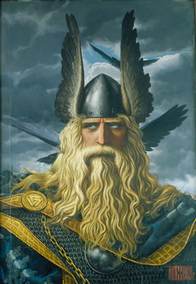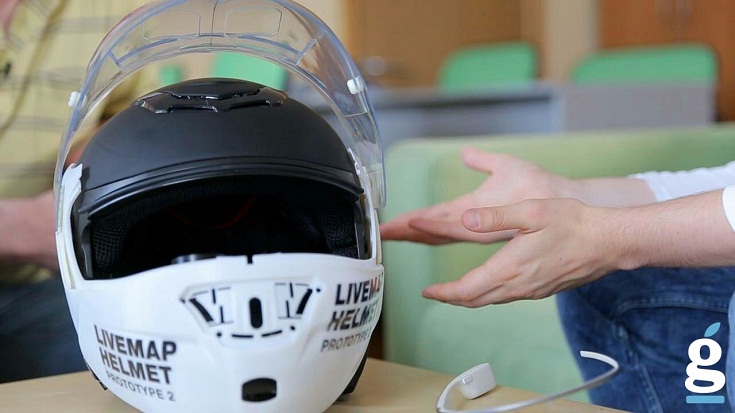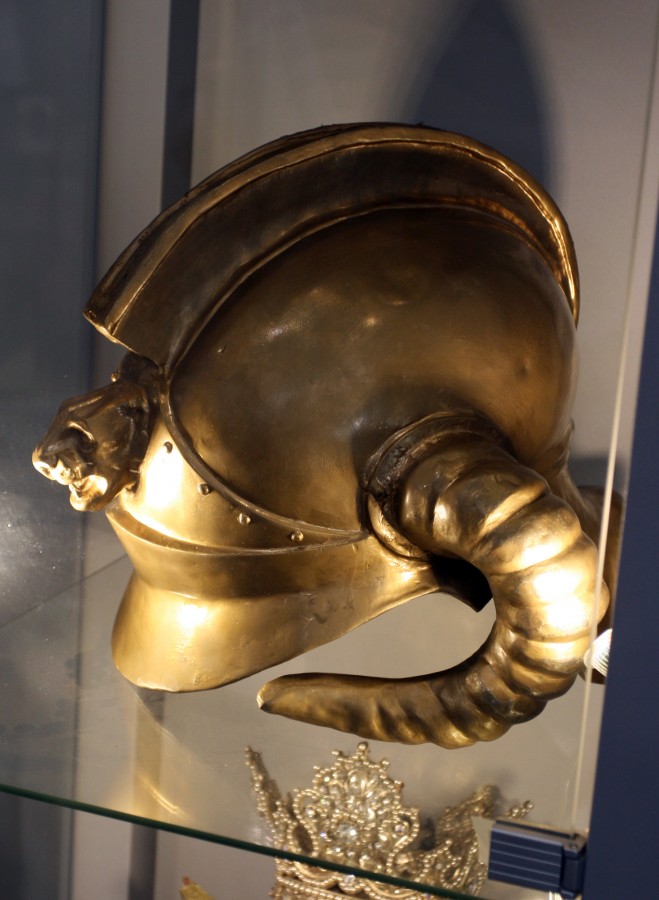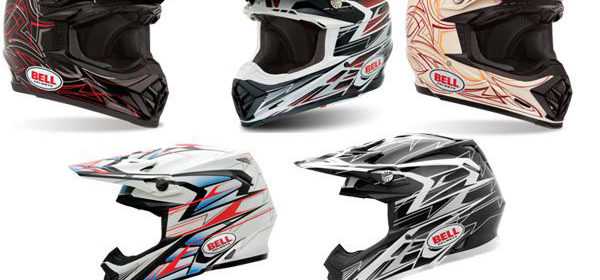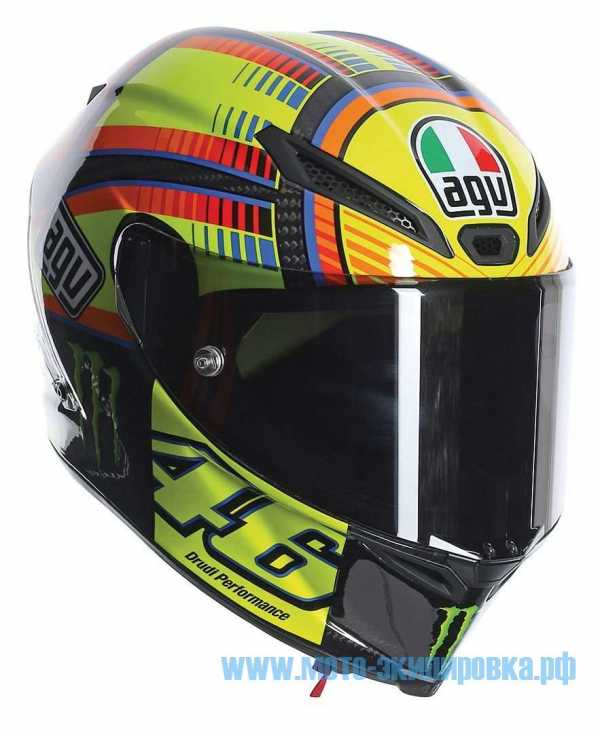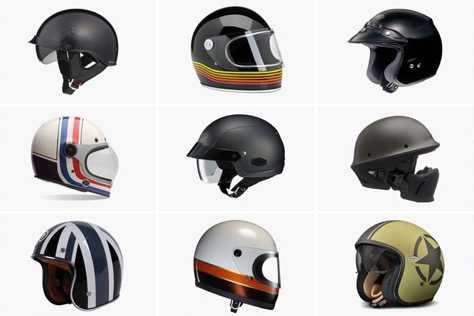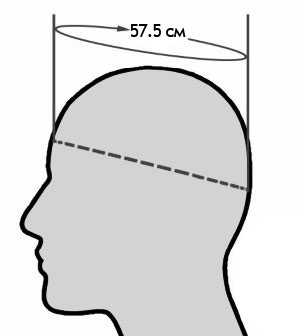Фракийский шлем. Фракийский шлем
Фракийский шлем — Википедия (с комментариями)
Материал из Википедии — свободной энциклопедии
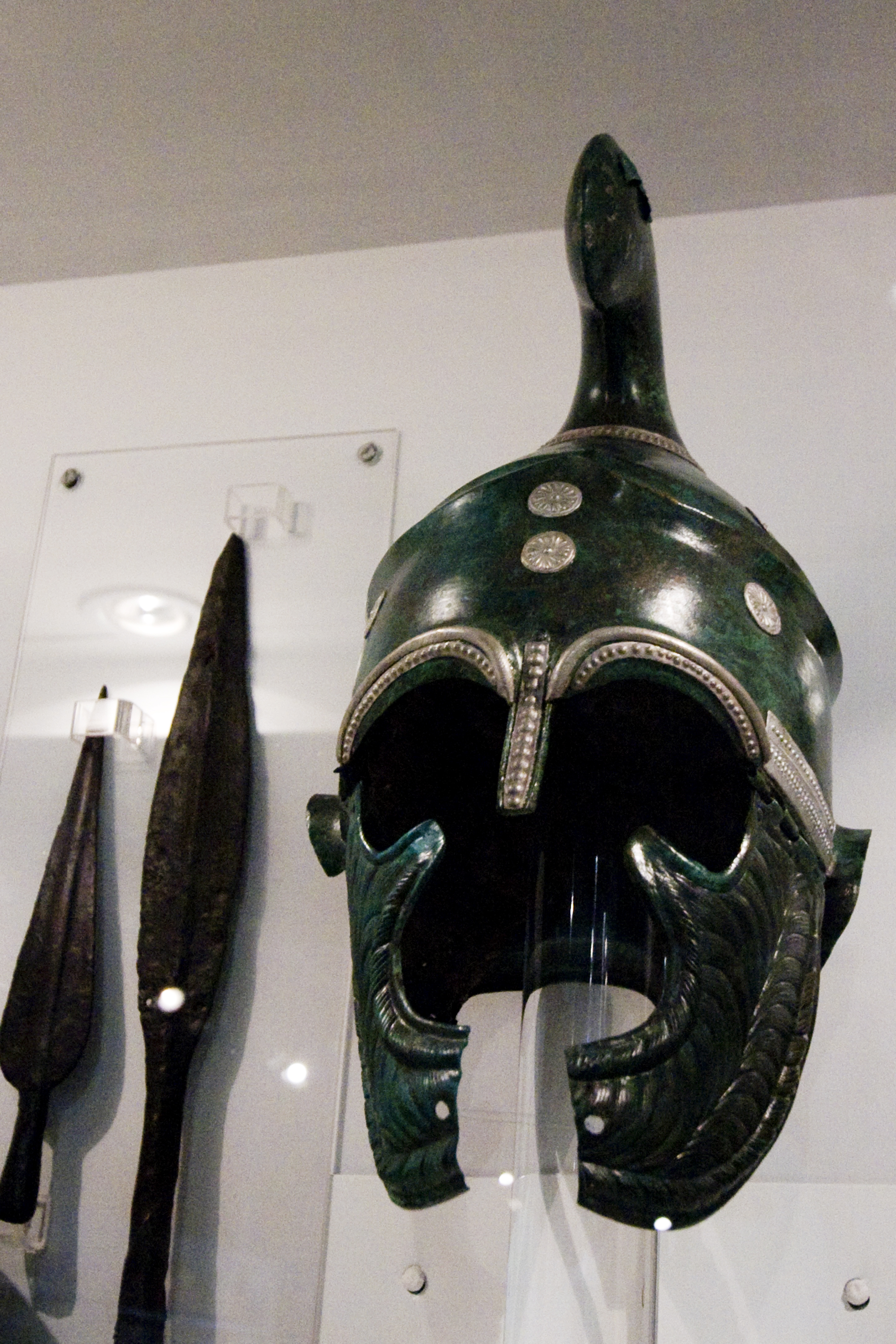 Фракийский шлем — наиболее неопределенный тип шлема. Создается впечатление, что в этот класс сваливают все шлемы, отличные от классических греческих и римских. Часто фригийские шлемы называют фракийскими. Если следовать признакам известного шлема гладиаторов-фракийцев, то фракийским следует считать шлем с высоким металлическим гребнем или иным украшением (фигурка зверя) на макушке. До римского времени обычно называют фракийским тип кавалерийского шлема, популярного у всадников Македонии и особенно в южной Италии. Именно в тех краях рисуют на фресках воинов в подобных шлемах в IV—III в. до н. э.
Фракийский шлем — наиболее неопределенный тип шлема. Создается впечатление, что в этот класс сваливают все шлемы, отличные от классических греческих и римских. Часто фригийские шлемы называют фракийскими. Если следовать признакам известного шлема гладиаторов-фракийцев, то фракийским следует считать шлем с высоким металлическим гребнем или иным украшением (фигурка зверя) на макушке. До римского времени обычно называют фракийским тип кавалерийского шлема, популярного у всадников Македонии и особенно в южной Италии. Именно в тех краях рисуют на фресках воинов в подобных шлемах в IV—III в. до н. э.
От аттического и халкидского отличается отсутствием конского гребня и вытянутым вверх навершием, подобно как у кирасир XIX века. Наносник отсутствует, плоские нащечники имеют фигурные очертания или отсутствуют. Характерный металлический гребень, наложенный поверх сферы шлема или его составная часть, был излюбленным местом для размещения всяких лепных фигурок и украшений. Александр Македонский, судя по описанию Плутарха и находкам в склепе Филиппа II, надевал в бой железный шлем такого типа, по бокам которого крепились роскошные перья. Изображения фракийских шлемов с перьями по бокам встречаются на фресках в греческих полисах южной Италии и Македонии.
Во II в. до н. э. фракийский шлем стал самым распространенным в Греции. Гребень становится небольшим, без украшений, зато появляется передний козырёк. На барельефе из Лувра, созданном в 180 до н. э., видны такие [upload.wikimedia.org/wikipedia/commons/b/bb/Amazonomachia_Louvre_Ma2119_2.jpg шлемы]. Воюющие люди сделали выбор в пользу удобства, хороший обзор и маневренность защищали лучше бронзы, особенно от тяжелых мечей и железных пик. Переход на железо в доспехах заставил отказаться от универсальных фракийских шлемов, но когда кузнечные технологии развились, фракийский тип ожил в виде французских касок в 1-й мировой войне.
См. также
Напишите отзыв о статье "Фракийский шлем"
Отрывок, характеризующий Фракийский шлем
– Ангел, отец! Ура, батюшка!.. – кричали народ и Петя, и опять бабы и некоторые мужчины послабее, в том числе и Петя, заплакали от счастия. Довольно большой обломок бисквита, который держал в руке государь, отломившись, упал на перилы балкона, с перил на землю. Ближе всех стоявший кучер в поддевке бросился к этому кусочку бисквита и схватил его. Некоторые из толпы бросились к кучеру. Заметив это, государь велел подать себе тарелку бисквитов и стал кидать бисквиты с балкона. Глаза Пети налились кровью, опасность быть задавленным еще более возбуждала его, он бросился на бисквиты. Он не знал зачем, но нужно было взять один бисквит из рук царя, и нужно было не поддаться. Он бросился и сбил с ног старушку, ловившую бисквит. Но старушка не считала себя побежденною, хотя и лежала на земле (старушка ловила бисквиты и не попадала руками). Петя коленкой отбил ее руку, схватил бисквит и, как будто боясь опоздать, опять закричал «ура!», уже охриплым голосом. Государь ушел, и после этого большая часть народа стала расходиться. – Вот я говорил, что еще подождать – так и вышло, – с разных сторон радостно говорили в народе. Как ни счастлив был Петя, но ему все таки грустно было идти домой и знать, что все наслаждение этого дня кончилось. Из Кремля Петя пошел не домой, а к своему товарищу Оболенскому, которому было пятнадцать лет и который тоже поступал в полк. Вернувшись домой, он решительно и твердо объявил, что ежели его не пустят, то он убежит. И на другой день, хотя и не совсем еще сдавшись, но граф Илья Андреич поехал узнавать, как бы пристроить Петю куда нибудь побезопаснее.15 го числа утром, на третий день после этого, у Слободского дворца стояло бесчисленное количество экипажей. Залы были полны. В первой были дворяне в мундирах, во второй купцы с медалями, в бородах и синих кафтанах. По зале Дворянского собрания шел гул и движение. У одного большого стола, под портретом государя, сидели на стульях с высокими спинками важнейшие вельможи; но большинство дворян ходило по зале. Все дворяне, те самые, которых каждый день видал Пьер то в клубе, то в их домах, – все были в мундирах, кто в екатерининских, кто в павловских, кто в новых александровских, кто в общем дворянском, и этот общий характер мундира придавал что то странное и фантастическое этим старым и молодым, самым разнообразным и знакомым лицам. Особенно поразительны были старики, подслеповатые, беззубые, плешивые, оплывшие желтым жиром или сморщенные, худые. Они большей частью сидели на местах и молчали, и ежели ходили и говорили, то пристроивались к кому нибудь помоложе. Так же как на лицах толпы, которую на площади видел Петя, на всех этих лицах была поразительна черта противоположности: общего ожидания чего то торжественного и обыкновенного, вчерашнего – бостонной партии, Петрушки повара, здоровья Зинаиды Дмитриевны и т. п.
wiki-org.ru
Фракийский шлем — Википедия (с комментариями)
Материал из Википедии — свободной энциклопедии
Фракийский шлем — наиболее неопределенный тип шлема. Создается впечатление, что в этот класс сваливают все шлемы, отличные от классических греческих и римских. Часто фригийские шлемы называют фракийскими. Если следовать признакам известного шлема гладиаторов-фракийцев, то фракийским следует считать шлем с высоким металлическим гребнем или иным украшением (фигурка зверя) на макушке. До римского времени обычно называют фракийским тип кавалерийского шлема, популярного у всадников Македонии и особенно в южной Италии. Именно в тех краях рисуют на фресках воинов в подобных шлемах в IV—III в. до н. э.
От аттического и халкидского отличается отсутствием конского гребня и вытянутым вверх навершием, подобно как у кирасир XIX века. Наносник отсутствует, плоские нащечники имеют фигурные очертания или отсутствуют. Характерный металлический гребень, наложенный поверх сферы шлема или его составная часть, был излюбленным местом для размещения всяких лепных фигурок и украшений. Александр Македонский, судя по описанию Плутарха и находкам в склепе Филиппа II, надевал в бой железный шлем такого типа, по бокам которого крепились роскошные перья. Изображения фракийских шлемов с перьями по бокам встречаются на фресках в греческих полисах южной Италии и Македонии.
Во II в. до н. э. фракийский шлем стал самым распространенным в Греции. Гребень становится небольшим, без украшений, зато появляется передний козырёк. На барельефе из Лувра, созданном в 180 до н. э., видны такие [http://upload.wikimedia.org/wikipedia/commons/b/bb/Amazonomachia_Louvre_Ma2119_2.jpg шлемы]. Воюющие люди сделали выбор в пользу удобства, хороший обзор и маневренность защищали лучше бронзы, особенно от тяжелых мечей и железных пик. Переход на железо в доспехах заставил отказаться от универсальных фракийских шлемов, но когда кузнечные технологии развились, фракийский тип ожил в виде французских касок в 1-й мировой войне.
См. также
Напишите отзыв о статье "Фракийский шлем"
Отрывок, характеризующий Фракийский шлем
– Подождите!!! Разве я не имею права даже проститься с ним?! – возмущённо воскликнула я. – В этом не может мне отказать даже церковь! Вернее, именно церковь должна оказать мне эту милость! Не она ли призывает к милосердию? Хотя со стороны святейшего Папы, как я понимаю, этого милосердия нам не видать! – Церковь Вам ничего не должна, Изидора. Вы колдунья, и как раз-то на Вас её милосердие не простирается! – совершенно спокойно произнёс Караффа. – Вашему мужу уже не поможет Ваш плачь! Идите лучше подумайте, как стать сговорчивее, тем же самым не заставляя более себя и других так сильно страдать. Он удалился, как ни в чём не бывало, будто и не прерывал только что чью-то драгоценную жизнь, будто на душе у него всё было просто и хорошо... Если душа, как таковая, была у него вообще. Меня вернули в мои покои, так и не разрешив отдать умершему мужу последнюю дань. Сердце стыло в отчаянии и печали, судорожно цепляясь за крохотную надежду, что, возможно, Джироламо был первым и последним из моей несчастной семьи, кого этот изверг в папской сутане заставил страдать, и у которого он так просто и развлекаясь отобрал жизнь. Я знала, что ни смерть моего отца, и уж тем более – смерть Анны, я, вероятнее всего, не смогу пережить. Но меня ещё более пугало то, что я понимала – Караффа тоже это знал... И я ломала голову, составляя планы один фантастичнее другого. Но надежда уцелеть хотя бы на ближайшее время, чтобы попытаться помочь своим родным, таяла, как дым. Прошла неделя, Караффа всё ещё не появлялся. Возможно, ему (так же, как и мне!) нужно было время, чтобы обдумать свой следующий шаг. А возможно его отвлекли какие-то другие обязанности. Хотя в последнее мне верилось с трудом. Да, он был Римским Папой... Но в то же время, он ещё был и невероятно азартным игроком, пропустить интересную партию для которого, было свыше его сил. А игра со мной в «кошки-мышки» доставляла ему, я думаю, истинное удовольствие... Поэтому я изо всех сил старалась успокоиться и найти в своей измученной голове хотя бы какую-то «умную» мысль, которая помогла бы мне сосредоточиться на нашей неравной «войне», из которой, в реальности, у меня не остава-лось никакой надежды выйти победительницей... Но я всё равно не сдавалась, так как для меня «сдавшийся человек» был намного хуже, чем мёртвый человек. И так как я пока что была живой, это означало – я всё ещё могла бороться, даже если моя душа уже медленно умирала... Мне надо было хоть сколько-то продержаться, чтобы успеть уничтожить эту смертельно-опасную гадюку, коей являлся Караффа... Теперь у меня уже не оставалось никаких сомнений в том, что я смогу его убить, если только представится такая возможность. Только вот, как это сделать, я пока что не имела ни малейшего понятия. Как я только что печально убедилась на собственном опыте – моим «обычным» способом Караффу уничтожить было нельзя. Значит, приходилось искать что-то другое, а вот времени для этого у меня, к сожалению, почти что не оставалось.o-ili-v.ru
Фракийский шлем - WikiVisually
1. Фригийский шлем – The names given to this type of helmet are derived from its shape, in particular the high and forward inclined apex, in which it resembles the caps habitually worn by Phrygian and Thracian peoples. Like other types of Greek helmet, the vast majority of Phrygian helmets were made of bronze, the skull of the helmet was usually raised from a single sheet of bronze, though the forward-pointing apex was sometimes made separately and riveted to the skull. The skull was often drawn out into a peak at the front, the face was further protected by large cheekpieces, made separately from the skullpiece. Sometimes these cheekpieces were so large that they met in the centre leaving a gap for the nose, when constructed in this manner they would have embossed and engraved decoration to mimic a beard and moustache. The Phrygian helmet was worn by Macedonian cavalry in King Philips day but his son Alexander is said to have preferred the open-faced Boeotian helmet for his cavalry, as recommended by Xenophon. The royal burial in the Vergina Tomb contained a helmet which was a variation on the Phrygian type, exceptionally made of iron, anderson, J. K, Ancient Greek Horsemanship, Berkeley and Los Angeles
2. Гладиатор – A gladiator was an armed combatant who entertained audiences in the Roman Republic and Roman Empire in violent confrontations with other gladiators, wild animals, and condemned criminals. Some gladiators were volunteers who risked their lives and their legal and social standing by appearing in the arena, most were despised as slaves, schooled under harsh conditions, socially marginalized, and segregated even in death. Irrespective of their origin, gladiators offered spectators an example of Romes martial ethics and, in fighting or dying well, they could inspire admiration and popular acclaim. They were celebrated in high and low art, and their value as entertainers was commemorated in precious, the origin of gladiatorial combat is open to debate. There is evidence of it in funeral rites during the Punic Wars of the 3rd century BC and its popularity led to its use in ever more lavish and costly games. The gladiator games lasted for nearly a thousand years, reaching their peak between the 1st century BC and the 2nd century AD. The games finally declined during the early 5th century after the adoption of Christianity as state church of the Roman Empire in 380, early literary sources seldom agree on the origins of gladiators and the gladiator games. In the late 1st century BC, Nicolaus of Damascus believed they were Etruscan, a generation later, Livy wrote that they were first held in 310 BC by the Campanians in celebration of their victory over the Samnites. This was accepted and repeated in most early modern, standard histories of the games, reappraisal of pictorial evidence supports a Campanian origin, or at least a borrowing, for the games and gladiators. Campania hosted the earliest known gladiator schools, tomb frescoes from the Campanian city of Paestum show paired fighters, with helmets, spears and shields, in a propitiatory funeral blood-rite that anticipates early Roman gladiator games. Compared to these images, supporting evidence from Etruscan tomb-paintings is tentative, the Paestum frescoes may represent the continuation of a much older tradition, acquired or inherited from Greek colonists of the 8th century BC. This is described as a munus, a duty owed the manes of a dead ancestor by his descendants. The war in Samnium, immediately afterwards, was attended with equal danger, the enemy, besides their other warlike preparation, had made their battle-line to glitter with new and splendid arms. There were two corps, the shields of the one were inlaid with gold, of the other with silver, the Dictator, as decreed by the senate, celebrated a triumph, in which by far the finest show was afforded by the captured armour. His plain Romans virtuously dedicate the magnificent spoils of war to the Gods and their Campanian allies stage a dinner entertainment using gladiators who may not be Samnites, but play the Samnite role. Other groups and tribes would join the cast list as Roman territories expanded, most gladiators were armed and armoured in the manner of the enemies of Rome. The munus became a morally instructive form of historic enactment in which the only option for the gladiator was to fight well. In 216 BC, Marcus Aemilius Lepidus, late consul and augur, was honoured by his sons with three days of gladiatora munera in the Forum Romanum, using pairs of gladiators
3. Аттический шлем – The Attic helmet was a type of helmet that originated in Classical Greece and was widely used in Italy and the Hellenistic world until well into the Roman Empire. Its name is a modern convention, Terms such as Illyrian and Attic are used in archaeology for convenience to denote a particular type of helmet. The Attic helmet was similar to the Chalcidian helmet but lacked a nose guard, although in Greece itself its use was not as widespread as the Corinthian or Phrygian types, the Attic helmet became very popular in Italy, where most examples have been found. Many Italian peoples used variations of the helmet, but archaeologically it has been especially prominent in Samnite and Lucanian burials. As such, a form of Attic helmet has become part of the image of a Roman officer. However, no remains of this type of helmet have been found to date. The closest surviving Imperial Roman helmet to the type illustrated in relief sculpture dates to the 2nd century AD and it has been classified as a pseudo-Attic helmet by some scholars. It is of tinned bronze and is elaborately decorated with an integral crest raised from the skull incorporating an eagle
4. Халкидский шлем – A Chalcidian helmet or Chalcidian type helmet was a helmet made of bronze and worn by ancient warriors of the Hellenic world, especially popular in Greece in the fifth and fourth centuries BC. The helmet was also extensively in the Greek parts of Italy in the same period. The helmet is so-called because it was first, and is most commonly, in fact, it is not known whether the helmet originated in Chalcis, indeed, it is not even known whether the pottery in question was Chalcidian. The helmet appears to have been a development of the Corinthian helmet, its improvements in design giving the wearer better hearing and vision, resulting in a lighter and less bulky helmet. It consisted of a dome, and below that, generally inset from the top dome, a pair of cheek pieces. In the front, between the two pieces, was a small nasal bar to protect the wearers nose. The helmet could be one piece, or the cheek pieces could be attached separately by hinges. In Italy, the helmet with fixed cheek pieces is referred to as Chalcidian, the helmet would commonly have a hole pierced on each cheek piece or elsewhere in order to accept an inner lining which was made of leather. Adornments such as combs and other protuberances were usually placed on the top of the helmet, by the time of Alexander the Great, the helmet was still worn by armoured soldiers, especially Hoplites, the spear-armed heavy infantrymen. It is likely some of the Macedonian soldiers who ruled the rest of Greece. The helmet is thought to have developed in turn into the Attic helmet which is iconic of classical soldiers, the Cultural Development in North Western Lucania C. Greek Hoplite, 480-323 BC, 480-323 BC
5. Александр Македонский – Alexander III of Macedon, commonly known as Alexander the Great, was a king of the Ancient Greek kingdom of Macedon and a member of the Argead dynasty. He was born in Pella in 356 BC and succeeded his father Philip II to the throne at the age of twenty and he was undefeated in battle and is widely considered one of historys most successful military commanders. During his youth, Alexander was tutored by Aristotle until the age of 16, after Philips assassination in 336 BC, he succeeded his father to the throne and inherited a strong kingdom and an experienced army. Alexander was awarded the generalship of Greece and used this authority to launch his fathers Panhellenic project to lead the Greeks in the conquest of Persia, in 334 BC, he invaded the Achaemenid Empire and began a series of campaigns that lasted ten years. Following the conquest of Anatolia, Alexander broke the power of Persia in a series of battles, most notably the battles of Issus. He subsequently overthrew Persian King Darius III and conquered the Achaemenid Empire in its entirety, at that point, his empire stretched from the Adriatic Sea to the Indus River. He sought to reach the ends of the world and the Great Outer Sea and invaded India in 326 BC and he eventually turned back at the demand of his homesick troops. Alexander died in Babylon in 323 BC, the city that he planned to establish as his capital, without executing a series of planned campaigns that would have begun with an invasion of Arabia. In the years following his death, a series of civil wars tore his empire apart, resulting in the establishment of several states ruled by the Diadochi, Alexanders surviving generals, Alexanders legacy includes the cultural diffusion which his conquests engendered, such as Greco-Buddhism. He founded some twenty cities that bore his name, most notably Alexandria in Egypt, Alexander became legendary as a classical hero in the mold of Achilles, and he features prominently in the history and mythic traditions of both Greek and non-Greek cultures. He became the measure against which military leaders compared themselves, and he is often ranked among the most influential people in human history. He was the son of the king of Macedon, Philip II, and his wife, Olympias. Although Philip had seven or eight wives, Olympias was his wife for some time. Several legends surround Alexanders birth and childhood, sometime after the wedding, Philip is said to have seen himself, in a dream, securing his wifes womb with a seal engraved with a lions image. Plutarch offered a variety of interpretations of dreams, that Olympias was pregnant before her marriage, indicated by the sealing of her womb. On the day Alexander was born, Philip was preparing a siege on the city of Potidea on the peninsula of Chalcidice. That same day, Philip received news that his general Parmenion had defeated the combined Illyrian and Paeonian armies, and it was also said that on this day, the Temple of Artemis in Ephesus, one of the Seven Wonders of the World, burnt down. This led Hegesias of Magnesia to say that it had burnt down because Artemis was away, such legends may have emerged when Alexander was king, and possibly at his own instigation, to show that he was superhuman and destined for greatness from conception
6. Плутарх – Plutarch was a Greek biographer and essayist, known primarily for his Parallel Lives and Moralia. He is classified as a Middle Platonist, Plutarchs surviving works were written in Greek, but intended for both Greek and Roman readers. Plutarch was born to a prominent family in the town of Chaeronea, about 80 km east of Delphi. The name of Plutarchs father has not been preserved, but based on the common Greek custom of repeating a name in alternate generations, the name of Plutarchs grandfather was Lamprias, as he attested in Moralia and in his Life of Antony. His brothers, Timon and Lamprias, are mentioned in his essays and dialogues. Rualdus, in his 1624 work Life of Plutarchus, recovered the name of Plutarchs wife, Timoxena, from internal evidence afforded by his writings. A letter is still extant, addressed by Plutarch to his wife, bidding her not to grieve too much at the death of their two-year-old daughter, interestingly, he hinted at a belief in reincarnation in that letter of consolation. The exact number of his sons is not certain, although two of them, Autobulus and the second Plutarch, are often mentioned. Plutarchs treatise De animae procreatione in Timaeo is dedicated to them, another person, Soklarus, is spoken of in terms which seem to imply that he was Plutarchs son, but this is nowhere definitely stated. Plutarch studied mathematics and philosophy at the Academy of Athens under Ammonius from 66 to 67, at some point, Plutarch took Roman citizenship. He lived most of his life at Chaeronea, and was initiated into the mysteries of the Greek god Apollo. For many years Plutarch served as one of the two priests at the temple of Apollo at Delphi, the site of the famous Delphic Oracle, twenty miles from his home. By his writings and lectures Plutarch became a celebrity in the Roman Empire, yet he continued to reside where he was born, at his country estate, guests from all over the empire congregated for serious conversation, presided over by Plutarch in his marble chair. Many of these dialogues were recorded and published, and the 78 essays, Plutarch held the office of archon in his native municipality, probably only an annual one which he likely served more than once. He busied himself with all the matters of the town. The Suda, a medieval Greek encyclopedia, states that Emperor Trajan made Plutarch procurator of Illyria, however, most historians consider this unlikely, since Illyria was not a procuratorial province, and Plutarch probably did not speak Illyrian. Plutarch spent the last thirty years of his serving as a priest in Delphi. He thus connected part of his work with the sanctuary of Apollo, the processes of oracle-giving
7. Филипп II Македонский – Philip II of Macedon was the king of the Ancient Greek kingdom of Macedon from 359 BC until his assassination in 336 BC. He was a member of the Argead dynasty of Macedonian kings, the son of King Amyntas III. However, his assassination led to the succession of his son Alexander. Philip was the youngest son of the king Amyntas III and Eurydice I, in his youth, Philip was held as a hostage in Thebes, which was then the leading city of Greece. In 364 BC, Philip returned to Macedon, the deaths of Philips elder brothers, King Alexander II and Perdiccas III, allowed him to take the throne in 359 BC. Originally appointed regent for his infant nephew Amyntas IV, who was the son of Perdiccas III, Philips military skills and expansionist vision of Macedonian greatness brought him early success. He first had to remedy a predicament which had greatly worsened by the defeat against the Illyrians in which King Perdiccas himself had died. Using diplomacy, Philip pushed back the Paionians and Thracians promising tributes, momentarily free from his opponents, he concentrated on strengthening his internal position and, above all, his army. Philip had married Audata, great-granddaughter of the Illyrian king of Dardania, however, this did not prevent him from marching against the Illyrians in 358 and crushing them in a ferocious battle in which some 7,000 Illyrians died. By this move, Philip established his authority inland as far as Lake Ohrid, the Athenians had been unable to conquer Amphipolis, which commanded the gold mines of Mount Pangaion. So Philip reached an agreement with Athens to lease the city to them after its conquest, however, after conquering Amphipolis, Philip kept both cities. As Athens had declared war against him, he allied Macedon with the Chalkidian League of Olynthus and he subsequently conquered Potidaea, this time keeping his word and ceding it to the League in 356. In 357 BC, Philip married the Epirote princess Olympias, who was the daughter of the king of the Molossians, Alexander was born in 356, the same year as Philips racehorse won at the Olympic Games. During 356 BC, Philip conquered the town of Crenides and changed its name to Philippi and he then established a powerful garrison there to control its mines, which yielded much of the gold he later used for his campaigns. In the meantime, his general Parmenion defeated the Illyrians again, in 355–354 he besieged Methone, the last city on the Thermaic Gulf controlled by Athens. During the siege, Philip was injured in his eye, despite the arrival of two Athenian fleets, the city fell in 354. Philip also attacked Abdera and Maronea, on the Thracian coast, Philip was involved in the Third Sacred War which had begun in Greece in 356. In summer 353 he invaded Thessaly, defeating 7,000 Phocians under the brother of Onomarchus, the latter however defeated Philip in the two succeeding battles
8. Лувр – The Louvre or the Louvre Museum is the worlds largest museum and a historic monument in Paris, France. A central landmark of the city, it is located on the Right Bank of the Seine in the citys 1st arrondissement, approximately 38,000 objects from prehistory to the 21st century are exhibited over an area of 72,735 square metres. The Louvre is the second most visited museum after the Palace Museum in China. The museum is housed in the Louvre Palace, originally built as a fortress in the late 12th century under Philip II, remnants of the fortress are visible in the basement of the museum. Due to the expansion of the city, the fortress eventually lost its defensive function and. The building was extended many times to form the present Louvre Palace, in 1692, the building was occupied by the Académie des Inscriptions et Belles Lettres and the Académie Royale de Peinture et de Sculpture, which in 1699 held the first of a series of salons. The Académie remained at the Louvre for 100 years, during the French Revolution, the National Assembly decreed that the Louvre should be used as a museum to display the nations masterpieces. The museum opened on 10 August 1793 with an exhibition of 537 paintings, because of structural problems with the building, the museum was closed in 1796 until 1801. The collection was increased under Napoleon and the museum renamed Musée Napoléon, the collection was further increased during the reigns of Louis XVIII and Charles X, and during the Second French Empire the museum gained 20,000 pieces. Holdings have grown steadily through donations and bequests since the Third Republic, whether this was the first building on that spot is not known, it is possible that Philip modified an existing tower. According to the authoritative Grand Larousse encyclopédique, the name derives from an association with wolf hunting den, in the 7th century, St. Fare, an abbess in Meaux, left part of her Villa called Luvra situated in the region of Paris to a monastery. This territory probably did not correspond exactly to the modern site, the Louvre Palace was altered frequently throughout the Middle Ages. In the 14th century, Charles V converted the building into a residence and in 1546, Francis acquired what would become the nucleus of the Louvres holdings, his acquisitions including Leonardo da Vincis Mona Lisa. After Louis XIV chose Versailles as his residence in 1682, constructions slowed, however, on 14 October 1750, Louis XV agreed and sanctioned a display of 96 pieces from the royal collection, mounted in the Galerie royale de peinture of the Luxembourg Palace. Under Louis XVI, the museum idea became policy. The comte dAngiviller broadened the collection and in 1776 proposed conversion of the Grande Galerie of the Louvre – which contained maps – into the French Museum, many proposals were offered for the Louvres renovation into a museum, however, none was agreed on. Hence the museum remained incomplete until the French Revolution, during the French Revolution the Louvre was transformed into a public museum. In May 1791, the Assembly declared that the Louvre would be a place for bringing together monuments of all the sciences, on 10 August 1792, Louis XVI was imprisoned and the royal collection in the Louvre became national property
9. Каска – A helmet is a form of protective gear worn to protect the head from injuries. More specifically, a helmet aids the skull in protecting the human brain, ceremonial or symbolic helmets without protective function are sometimes used. The oldest known use of helmets was by Assyrian soldiers in 900 BC, soldiers still wear helmets, now often made from lightweight plastic materials. In civilian life, helmets are used for activities and sports, dangerous work activities. Since the 1990s, most helmets are made from resin or plastic, the word helmet is diminutive from helm, a medieval word for protective combat headgear. The Medieval great helm covers the head and often is accompanied with camail protecting throat. Originally a helmet was a helm which covered the head only partly, all helmets attempt to protect the users head by absorbing mechanical energy and protecting against penetration. Their structure and protective capacity are altered in high-energy impacts, beside their energy-absorption capability, their volume and weight are also important issues, since higher volume and weight increase the injury risk for the users head and neck. Anatomical helmets adapted to the head structure were invented by neurosurgeons at the end of the 20th century. Helmets used for different purposes have different designs, for example, a bicycle helmet must protect against blunt impact forces from the wearers head striking the road. A helmet designed for rock climbing must protect against heavy impact, sports helmets may have an integrated metal face protector. Baseball batting helmets have an expanded protection over the ear, which protects the jaw from injury, motorcycle helmets often have flip-down face screens for rain and wind protection, and they may also have projecting visors to protect the eyes from glare. Hard hats for construction workers are mainly to protect the wearer from falling objects such as tools. Helmets for riot police often have flip-down clear visors and thick padding to protect the back of the neck, Modern firefighters helmets protect the face and back of the head against impact, fires and electricity, and can include masks, communication systems, and other accessories. Welding helmets protect the eyes and face and neck from flash burn, ultraviolet light, sparks and heat. They have a window, called a lens shade, through which the welder looks at the weld. People with some medical conditions must wear a helmet to protect the brain, due to a gap in the braincase, mixed martial arts helmets have ear pads to prevent serious injuries to the athletes, who do not usually endure such force to the ears. Crash helmets for F1 racing drivers, their design and construction have evolved enormously, nevertheless, head and neck trauma remains the greatest single injury risk to drivers
10. Гоплит – Hoplites were citizen-soldiers of Ancient Greek city-states who were primarily armed with spears and shields. Hoplite soldiers utilized the phalanx formation in order to be effective in war with fewer soldiers, the hoplites were primarily represented by free citizens—propertied farmers and artisans—who were able to afford the bronze armour suit and weapons. Hoplites were not professional soldiers and often lacked sufficient military training, although some states did maintain a small elite professional unit, hoplite soldiers were relied on heavily and made up the bulk of ancient Greek armies of the time. In the 8th or 7th century BC, Greek armies adopted a military innovation known as the phalanx formation, the formation proved successful in defeating the Persians when employed by the Athenians at the Battle of Marathon in 490 BC during the First Greco-Persian War. The phalanx was also employed by the Greeks at the Battle of Thermopylae in 480 BC. The word hoplite derives from hoplon, the name for the type of shield used by the soldiers, however, the shield was more commonly known as an aspis, so the word hopla may refer to the soldiers weapons or even their full armament. In the modern Hellenic Army, the word hoplite is used to refer to an infantryman, the fragmented political structure of Ancient Greece, with many competing city-states, increased the frequency of conflict, but at the same time limited the scale of warfare. Limited manpower did not allow most Greek city-states to form armies which could operate for long periods because they were generally not formed from professional soldiers. Most soldiers had careers as farmers or workers and returned to these professions after the campaign, all hoplites were expected to take part in any military campaign when called for duty by leaders of the state. This inevitably reduced the duration of campaigns and often resulted in the campaign season being restricted to one summer. Armies generally marched directly to their destination, and in cases the battlefield was agreed to by the contestants in advance. Battles were fought on ground, and hoplites preferred to fight with high terrain on both sides of the phalanx so the formation could not be flanked. An example of this was the Battle of Thermopylae, where the Spartans specifically chose a narrow pass to make their stand against the massive Persian army. The vastly outnumbered Greeks held off the Persians for seven days, when battles occurred, they were usually set piece and intended to be decisive. The battlefield would be flat and open to facilitate phalanx warfare and these battles were usually short and required a high degree of discipline. At least in the classical period, when cavalry was present, its role was restricted to protection of the flanks of the phalanx, pursuit of a defeated enemy. Light infantry and missile troops took part in the battles but their role was less important, before the the opposing phalanxes engaged, the light troops would skirmish with the enemies light forces, and then protect the flanks and rear of the phalanx. The military structure created by the Spartans was a phalanx formation
wikivisually.com
Халкидикский шлем - это... Что такое Халкидикский шлем?

Предысторические шлемы (Archaic)

Шлем из захоронения XI в. до н. э. на Пелопоннесе (Греция). Кожаная часть добавлена при реставрации.
В древнегреческом языке понятие шлем вначале переводилось как сделанный из шкуры собаки. О шлемах из собаки ничего не известно, но в «Илиаде» упоминается шлем хорёвый, надо полагать из шкуры животного. Геродот, описывая одеяния и вооружения персидских полчищ в кн.7, говорит про лисьи шапки (шлемы?) на головах фракийцев. Также он говорит про кожаные шлемы других племен. Значит еще в начале V в. до н. э. такие шлемы не были экзотикой. Шапки из войлока, шкур и кожи укрепляли пластинами железа, костями, клыками, деревом, любым достаточно прочным материалом, не требующим особых навыков в ремесле (см. статью «Шлем из клыков»).
Позже стали сгибать по форме головы бронзовые пластины, охватывающие подкладку из того же войлока и кожи. Шлемы героев Троянской войны сильно отличались от тех, которые рисовали греки 6 веков спустя на вазах и состояли из 4-х пластин или «блях» в переводе на русский (хотя может Гомер описывал шлемы своего времени, IX—VIII вв. до н. э.), да и те шлемы изготовлены были не греками. Ввиду примитивной конструкции составной шлем древности дошел да нашего времени в 1-м, может 2-х экземплярах. Первые цельнометаллические шлемы собственного производства появились в Греции с XV в. до н. э., однако после Троянской войны (примерно XIII—XII в. до н. э.) случилось переселение народов. В Элладе настали «темные» века, и племена греков утеряли даже письменность, не говоря уж о ремесленных навыках. Первые найденные бронзовые шлемы в Элладе 1-го тысячелетия до н. э. датируются VIII в. до н. э.. По внешнему виду их можно отнести к иллирийскому типу.
Иллирийский тип (Illyrian)

Шлем иллирийского типа
Иллирийские шлемы — первые цельнометаллические шлемы, появившиеся в Древней Греции после «темных веков». Листы бронзы выгибали по форме головы, соединяли внахлест и скрепляли заклепками в местах соприкосновения, в результате на макушке получались продольные ребра жесткости. Потом научились ковать из цельной болванки, но продольные ребра остались как традиция.
Характерной особенностью шлема служат отсутствие наносника, продольные ребра на макушке, крупные треугольнообразные «уши»-нащёчники и прямоугольный вырез для лица.
К VI в. до н. э. иллирийские шлемы вышли из употребления в Элладе, вытесненные коринфскими
Коринфский или дорийский тип (Corinthian)

Шлем коринфского типа
Коринфские шлемы появились с VII в. до н. э., прославились в V в. до н. э. в греко-персидских войнах, а уже в IV в. до н. э. коринфский тип вытесняется более удобными халкидскими шлемами.
Полностью закрытый шлем. Давал полную защиту, однако наносник и закрытое лицо ограничивали обзор. Вне боя шлем сдвигался на затылок, открывая лицо.
Обычно шлем разделен в области рта, но в греческих полисах южной Италии, находят сплошные шлемы VI—V в. до н. э. Они напоминают котелок с отверстиями для глаз и дыхания характерной Т-образной формы, наносник разделяет «T» надвое. Этот тип шлема называется апуло-коринфский.
Халкидский тип (Chalcidian)

Шлем халкидского типа
Халкидские шлемы появились в VI в. до н. э. и были вытеснены из массового употребления более простыми пилосами и фракийскими шлемами в III в. до н. э.
Наносник у этого шлема символический или вообще отсутствует, за счет чего улучшается обзор. В районе ушей, появляется фигурный вырез. Улучшается комфортость, но ослабляется защита. Нащечники достаточно широкие, прямоугольной или округлой формы, часто фронтальный край нащечника волнообразный. Зрительно шлем состоит из двух частей: верхний полусферический кумпол и нижняя часть, соединяющиеся визуально в районе рельефно выступающего ободка.
Аттический тип (Attic)
Аттические шлемы — по сути разновидность халкидского шлема, изготовленного другой школой.
Отличие от халкидского типа минимально: других очертаний заостренные лунообразные нащечники, взятые от коринфских форм. В то время как халкидский шлем украшали часто султанами и перьями, на аттическом применяют архаичный карийский конный гребень.
Беотийский тип (Boeotian)

Беотийский шлем
Беотийский шлем — кавалерийский шлем. Появился в Беотии, потом его переняли в Фессалии, также его взяли на вооружение македонские гетайры.
Имеет широкие поля, которые предохраняют от удара мечом сверху и прикрывают шею. Комфортен для длительного ношения в жарком климате.
Фракийский тип (Thracian)

Шлем фракийского типа
Фракийский шлем имеет вытянутый вверх кумпол. Наносник отсутствует, плоские нащечники имеют фигурные очертания или отсутствуют. Характерный металлический гребень, наложенный поверх сферы
Во II в. до н. э. фракийский шлем стал самым распространенным в Греции. Гребень становится небольшим, без претензий, зато появляется козырек.
Был сделан выбор в пользу удобства, хороший обзор и маневренность защищали лучше бронзы, особенно от тяжелых мечей и железных пик.
Переход на железо в доспехах заставил отказаться от универсальных фракийских шлемов.
Пилос (Pilos)
Пилос - шлем для легковооруженной пехоты. Технологичен в производстве. Представляет собой полуконическую закругленную бронзовую шапку. Первые образцы в конце 2-го тысячелетия до н. э. собирали из чешуек бронзы. Цельнометаллические пилосы появились к V в. до н. э.. В III в. до н. э. пилосы вытеснили из Эллады аттические шлемы.
Фригийский тип (Phrygian)

Шлем фригийского типа
Фригийский шлем - воспроизводит шапку скифов, фракийцев, других восточных народов. В какой-то мере является развитием пилоса. Макушка удлиняется и загибается каплей вперед, добавляется затылочная часть.
Позднее вместо загиба макушки стали загибать металлический гребень и такие шлемы называют уже фракийскими. В Македонии бронзовые фригийские колпаки к II в. до н. э. трансформировались во фракийские шлемы, с вытянутым вверх кумполом и простым невысоким металлическим гребнем или султаном из перьев.
См. также
Ссылки
Wikimedia Foundation. 2010.
dic.academic.ru



